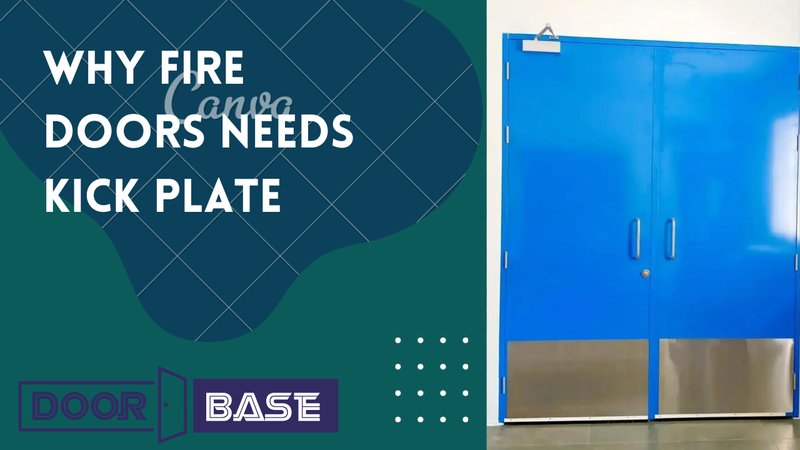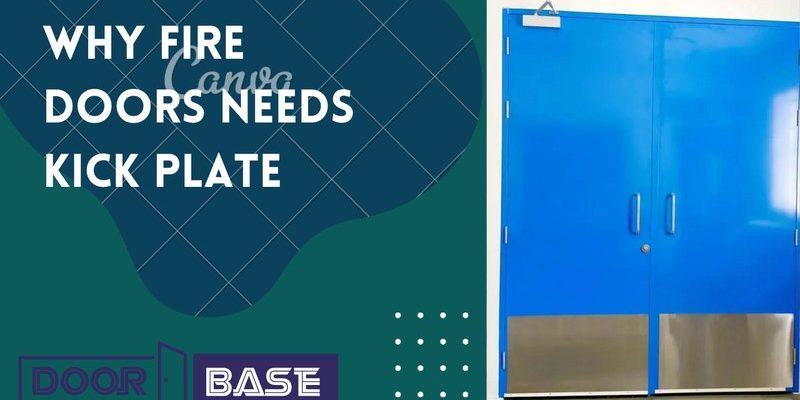
Here’s the thing: A vibrating kick plate isn’t just an odd sound to ignore. Over time, those vibrations can loosen screws, wear out finishes, and even make you question whether your door was installed right in the first place. Let me walk you through why it happens, what you can do about it, and how you can troubleshoot those irritating vibrations for good.
What Is a Kick Plate, and Why Do Doors Have Them?
Let’s start with the basics. A kick plate is the metal (sometimes plastic) strip you’ll usually find screwed or glued to the bottom half of your door. Its main job? Protecting the door from scuffs, dings, and all the other abuse it gets from shoes, pets, and even grocery carts. If you’ve ever kicked a door open when your hands are full, you know exactly why a kick plate is handy.
Most kick plates are pretty simple—just a thin sheet of brass, stainless steel, or aluminum, cut to size and screwed on. But some higher-end doors (especially on Schlage or Kwikset remotes and handlesets) come with kick plates built in. While they’re supposed to just sit there and take a beating, in the real world, they can start to vibrate. Why? Because the fit isn’t always perfect, or the mounting hardware works itself loose over time.
Honestly, you could ignore a vibrating kick plate, but if you care about that clean “thunk” when you close the door—or you hate little annoyances like I do—it’s worth understanding what’s going on.
Main Reasons Your Kick Plate Vibrates When Closing the Door
You might be wondering, “Why does this actually happen?” There are a few common reasons, and most are pretty easy to spot if you know what to look for.
- Loose screws or fasteners: Kick plates are usually attached with a handful of small screws. If even one gets loose, the plate can rattle every time the door moves.
- Improper fit: Not all kick plates fit snugly. Sometimes, there’s a tiny gap between the plate and the door. When you close the door, that air pressure or impact shakes the plate—just like loose siding on a windy day.
- Thin or cheap material: Some generic or universal kick plates, especially plastic ones, are more flexible and prone to moving around.
- Poor adhesive or tape: For adhesive-mounted plates (no screws), the glue can peel back over time. This lets the plate move—even just a millimeter—and create that buzzing sound.
Here’s the thing: Sometimes you’ll even hear the vibration through your security system remote, especially if it’s stored near the door. That’s not a wiring issue—it’s just the plate moving and making sound waves that travel.
How Door Construction Affects Kick Plate Vibrations
Not all doors are created equal, and that matters here. If you’ve got a solid wood door, for example, it’s less likely to vibrate than a hollow-core or lightweight steel door. Why? More mass means less movement. Think of it like the difference between tapping a brick and a thin piece of metal—they sound totally different, right?
Some doors use foam or honeycomb cores for insulation (pretty common on modern entry doors). These can help dampen some sound, but if the kick plate isn’t properly mounted, even a heavier door can rattle. Plus, doors with glass inserts, window panels, or extra security hardware often have more “give” and places where things can shake loose.
And if you have a remote smart lock or keypad—like those from Schlage, Kwikset, or August—sometimes the added electronics change the door’s natural resonance. That can actually make a kick plate even more likely to vibrate, especially if the installer didn’t tighten everything back up after wiring.
Diagnosing a Vibrating Kick Plate: Step-by-Step
Let’s say your kick plate is humming along every time you close the door. Where do you start? Here are the steps I recommend for quick troubleshooting:
- Check for loose screws: Run your fingers along the kick plate and gently tug. If any screws feel loose or you see obvious movement, that’s your prime suspect.
- Look for gaps: Stand to the side and check for spaces between the plate and the door. Even a tiny gap can cause vibration.
- Test the material: Press on different spots. If the plate flexes easily, especially near the edges, it might be a thin or cheap model that shakes on impact.
- Examine the mounting method: If the plate uses tape or glue, check for spots where it’s coming loose—dust, moisture, or repeated impact can break down adhesives over time.
- Listen carefully: Sometimes, the noise isn’t the kick plate at all—it could be a loose panel, threshold, or even the locking hardware. Tap around to isolate the sound.
If you’re working with a brand-name smart door setup, make sure none of the remote lock wires or battery housings are pressing up against the kick plate inside the door. It’s rare—but it happens.
Fixing a Loose or Vibrating Kick Plate
Alright, so you’ve found the culprit. Now what? Honestly, most kick plate fixes are a total DIY job. Here’s how I’d approach it:
- Tighten all screws: Use a screwdriver to snug them up—but don’t overtighten, or you’ll risk stripping the holes.
- Add extra screws or new anchors: If the plate is still wobbly, add an extra screw near the problem area or use larger screws. For hollow doors, plastic anchors can help.
- Switch to better adhesive: For tape- or glue-mounted plates, clean both surfaces with rubbing alcohol, then use heavy-duty double-sided tape or construction adhesive. Clamp or press it for several minutes.
- Add foam or gasket material: A thin strip of weatherstripping behind the plate can absorb vibration—especially if the fit is just a tiny bit off.
- Replace the kick plate: If it’s thin, warped, or rusted out, swap it for a sturdier model. Stainless steel is heavier and less likely to buzz.
A quick pro tip: If you’re removing the plate on a smart door (like a Schlage Encode or Kwikset Halo), check for any wires or battery packs. You don’t want to pinch anything when you reattach it.
Common Mistakes When Installing or Repairing Kick Plates
Maybe you installed a universal kick plate yourself, or the builder did a quick job. Here are a few classic errors that make the vibration problem worse:
- Using the wrong size screws: Too short, and the plate won’t hold. Too long, and you might poke through the door or hit wiring (especially on doors with smart remotes or sensors).
- Mounting over dirt or old adhesive: Plates won’t sit flat if there’s debris or leftover glue. Always clean the door surface before mounting.
- Skimping on attachment points: Some folks only use the two end screws, leaving the center to flex. Add extra screws or adhesive in the middle for stability.
- Covering gaps with caulk: While sealing gaps might seem smart, caulk is flexible and won’t stop a kick plate from rattling. It’s patchwork, not a fix.
If you’re working with branded smart locks or doors, always check your manual for any restrictions (some won’t let you drill near the lock or code system).
When to Call a Pro
Most vibrating kick plates are quick fixes, but sometimes it’s a bigger problem. If the door itself flexes, the frame feels loose, or your smart lock remote is acting up after a repair, it might be time to call a door specialist.
Situations where you’ll want an expert:
- You notice the whole door shakes, not just the plate
- The frame or threshold is loose or rotting
- Your electronic lock, code pad, or battery stops working after touch-ups
- The vibration is so loud that you can hear it through the house
A pro can check for installation issues, warped doors, or deeper hardware problems—especially important on newer smart locks or security remotes.
Preventing Kick Plate Vibrations on New Doors
If you’re replacing your door or installing a new kick plate, a little prep goes a long way. Here’s how to keep things quiet from the start:
- Choose the right plate: Thicker, heavier materials vibrate less. Stainless steel costs more, but it’s worth it for long-term quiet—and it looks sharp.
- Use good fasteners: Match screw size to your door type. Wood doors need longer screws; metal doors might need self-tapping ones.
- Test before final mounting: Temporarily tape the plate in place, close the door, and give it a gentle kick. Listen for buzzing before you attach it for good.
- Check hardware compatibility: If you have a remote keypad, smart lock, or paired accessories, make sure the kick plate doesn’t block or interfere with those systems.
Extra detail: On doors with advanced security remotes, always double-check the wiring before drilling or screwing anything into the door. One misplaced hole can cause trouble with code syncing or battery life.
Key Takeaways: Quieting Down for Good
A vibrating kick plate might seem like a small annoyance, but it’s one of those things that can drive you nuts once you notice it. Whether it’s a loose screw, a cheap plate, or a misaligned door, there’s almost always a simple fix—especially if you take your time with troubleshooting. Remember, your kick plate’s job is to protect your door, not become its own percussion instrument.
If you use a smart lock, remote, or keypad, pay a little extra attention during repairs. And if you ever hit a wall (figuratively—please don’t actually kick the door that hard), don’t be afraid to call in the pros. With a little patience, you’ll get back to that satisfying “click” of a perfectly closing, silent door.
